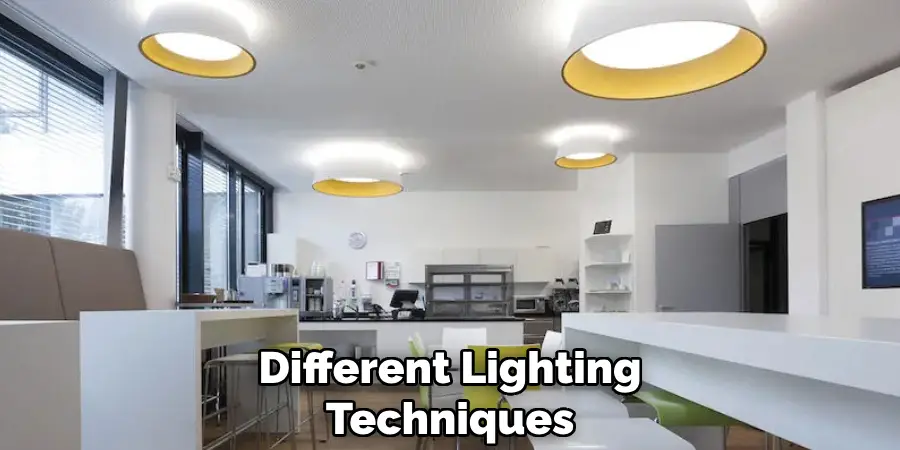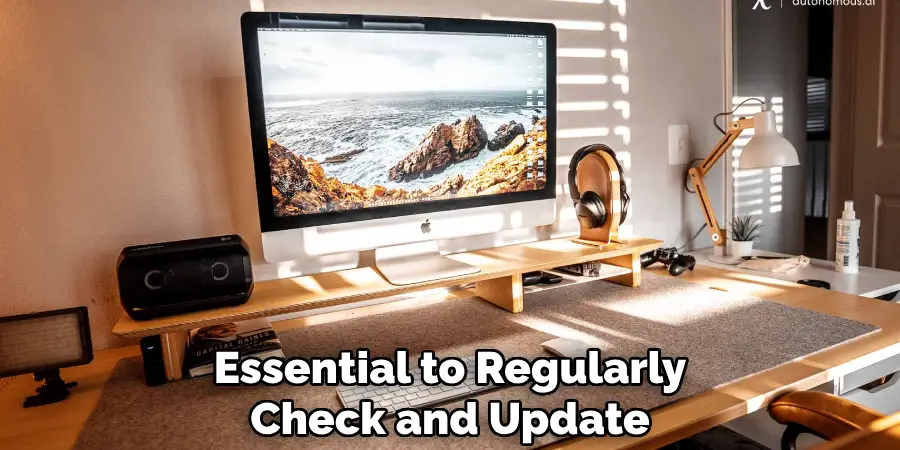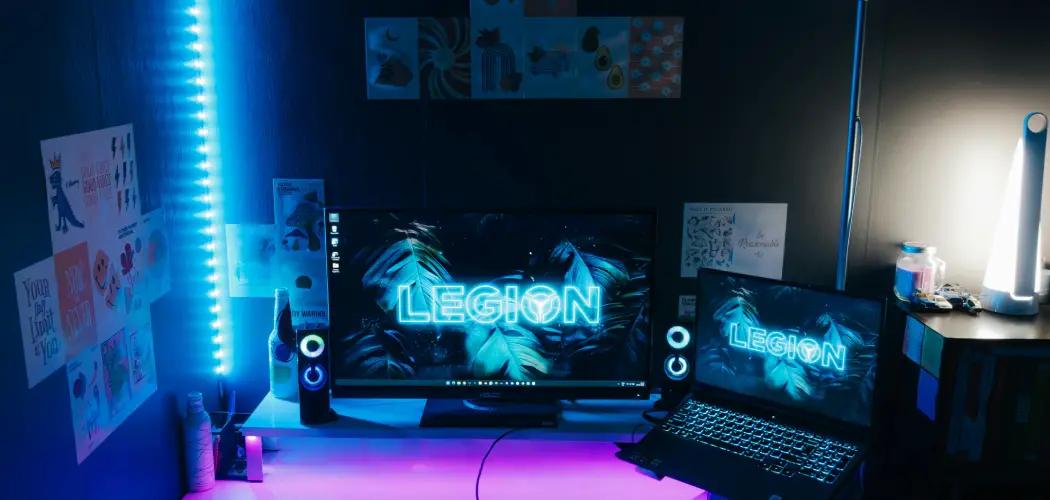Lighting up a desk effectively can transform your workspace into an inviting environment that boosts productivity and creativity. This experiment aims to explore different lighting techniques and configurations, understanding how each can affect mood, focus, and overall efficiency.
Whether you prefer a minimalist setup with a single lamp or a dynamic arrangement with multiple light sources, we’ll delve into the practical aspects of desk lighting and how they can be tailored to suit individual needs and preferences. By the end of this exploration of how to light up desk, you’ll be equipped with the knowledge to craft an ideal lighting experience that aligns with your personal and professional aspirations.

Why is Lighting Important for Your Desk?
Lighting plays a crucial role in creating a positive and productive workspace. It not only helps you see clearly but also impacts your mood and energy levels. A well-lit desk can reduce eye strain, headaches, and fatigue while enhancing concentration and creativity. On the other hand, poor lighting can lead to discomfort, distractions, and even health issues.
It’s essential to understand that lighting is not just about brightness but also about quality and direction. The color temperature and placement of light sources can significantly impact the overall feel and functionality of your workspace.
Factors to Consider When Lighting Up Your Desk
Before diving into different lighting techniques, it’s important to consider the following factors when setting up your desk lighting:
Natural Light:
Utilizing natural light is an excellent way to brighten up your desk without using artificial sources. Position your desk near a window or invest in a desk lamp with a natural light setting to mimic the effects of sunlight.
Color Temperature:
Color temperature refers to the warmth or coolness of light, measured in Kelvin (K). Generally, warm light (2700-3500K) is more calming and suitable for relaxation, while cool light (5000-6500K) promotes alertness and productivity. A neutral white light (between 3500-4500K) can strike a balance between the two.
Light Intensity:
The brightness level of your desk lighting should be bright enough to avoid strain on your eyes but not too harsh to cause glare. The recommended intensity is around 300-800 lux for office work and 800-2000 lux for tasks that require more precision, such as reading and writing.
Light Direction:
The direction of light can significantly impact your work experience. Direct light from above or behind can create glare and shadows, while indirect or diffused light from the side can provide a more even and comfortable illumination.

8 Step-by-step Guidelines on How to Light Up Desk
Step 1: Assess Your Workspace
Start by evaluating the natural and artificial light sources in your room, their placement, and how they affect your desk area. This will help you determine any adjustments needed to optimize lighting conditions.
It’s also crucial to consider the type of work you do at your desk and how much lighting is required for each task.
Step 2: Determine Your Desired Atmosphere
Consider the kind of ambiance you wish to create in your workspace. Your desired atmosphere will influence your choice of lighting style, color temperature, and intensity. If your goal is to have a calming environment, opt for warm, soft lighting that creates a cozy feel. Conversely, if you need a vibrant and energizing workspace, choose cooler and brighter lighting to keep you alert and focused.
Think about the mood you want to foster at your desk and adjust your lighting selections to support those feelings. Remember, the right atmosphere can enhance not only productivity but also comfort and enjoyment in your daily tasks.
Step 3: Choose Your Light Sources
Selecting the proper light sources for your desk is vital for achieving optimal lighting. Begin by deciding between ambient, task, and accent lighting, or a combination of these, to fulfill various needs throughout your workday. Ambient lighting provides general illumination; consider an overhead fixture or floor lamp for this purpose.
Task lighting is more focused and should be used to brighten particular areas of your desk, such as with a desk lamp or an adjustable arm lamp. Accent lighting, like LED strips or decorative lamps, can add character and highlight specific elements of your workspace. Ensure that your light sources are adjustable, allowing you to modify their positioning and brightness as your tasks and needs change.

Step 4: Consider Color Temperature
When choosing light bulbs for your desk, pay attention to their color temperature. As mentioned earlier, warm light is more suitable for relaxation and cool light promotes alertness. Consider using different colored bulbs or adjustable lighting fixtures to provide flexibility in creating the right ambiance for your workspace.
If possible, try to incorporate natural light into your desk lighting setup. Natural light not only provides the perfect color temperature but also has numerous health benefits.
Step 5: Layer Your Lighting
One single source of light may not be enough to fully illuminate your entire desk area. This is where layering comes into play. By combining different types of lighting, such as ambient, task, and accent lighting, you can achieve a well-balanced and functional desk setup.
Consider placing an overhead fixture or floor lamp as your ambient light source, a desk lamp or adjustable arm lamp for task lighting, and decorative accent lights to add personality and highlight specific areas of your workspace.
Step 6: Adjust Lighting Position
To avoid glare and shadows on your desk, it’s crucial to position your light sources correctly. Your ambient lighting should be placed above or around your workspace to evenly distribute light. Task lighting, such as a desk lamp, should be directed towards the work area but not directly on it, to prevent reflections and eyestrain. Accent lighting can be used to enhance certain elements of your workspace by being positioned in unique angles.
The key is to experiment with different positions and angles until you find the right balance of light for your desk.

Step 7: Utilize Dimmers
Installing dimmer switches for your lights allows you to adjust the intensity of your lighting according to your needs and mood. It also helps save energy and prolongs the lifespan of your bulbs.
But remember, dimmed lighting can be detrimental to productivity, so make sure not to dim your lights too much.
Step 8: Regularly Check and Update
As with any aspect of your workspace, it’s essential to regularly check and update your desk lighting setup. Over time, bulbs may need replacing or adjusting, and your needs may change. Re-evaluate your lighting every few months to ensure it still meets your desired atmosphere and functionality.
By following these guidelines on how to light up desk, you can create a well-lit and comfortable workspace that supports both productivity and well-being. Remember to consider natural light, color temperature, light intensity, and direction of light, as well as follow the step-by-step guidelines for setting up your desk lighting. With the right lighting, you can create an environment that enhances your work experience and overall enjoyment of your daily tasks. So, keep experimenting until you find the perfect balance of light for your desk! Happy working!

Experiment With Different Positions and Angles:
Don’t be afraid to get creative with your lighting setup! Experiment with different positions and angles for your light sources to find the perfect balance of lighting for your desk. Try different heights, distances, and angles until you find the most comfortable and functional placement for each light source. You can also utilize adjustable lighting fixtures to easily modify the positioning and direction of your lights as needed throughout the day.
Additionally, consider using reflective surfaces, such as mirrors or glossy materials, strategically placed around your desk to reflect and distribute light even further. This can help reduce shadows and improve overall lighting in your workspace.
Frequently Asked Questions
Q: Can I Use Natural Light as My Only Source of Lighting for My Desk?
A: While natural light is beneficial and highly recommended, it may not always be available or sufficient for your needs. It’s best to have a combination of natural and artificial light sources in your desk lighting setup to ensure proper illumination throughout the day.
Q: How Do I Prevent Glare on My Desk?
A: To prevent glare, make sure your light sources are not directly facing your work surface. Instead, aim them towards the workspace but not directly on it. You can also use matte or frosted bulbs and shades to diffuse harsh light and reduce glare.
Q: What Is the Best Color Temperature for Desk Lighting?
A: The best color temperature for desk lighting depends on personal preference and the tasks being performed. Generally, a range of 2700K-4000K is recommended for office spaces, as it provides a balance between warm and cool lighting. However, consider using bulbs with adjustable color temperature for more flexibility in creating the right ambiance for your workspace.
Conclusion
Lighting is a crucial aspect of creating a functional and comfortable workspace. By considering factors like natural light, color temperature, layering, positioning, and using dimmers, you can create a well-lit desk setup that enhances productivity and promotes overall well-being.
Don’t be afraid to experiment with different lighting options until you find the perfect balance for your needs. Regularly evaluate and update your lighting setup to ensure it continues to meet your desired atmosphere and functionality.
With these tips on how to light up desk in mind, you can achieve a well-lit and enjoyable desk space that supports your daily tasks. So go ahead, light up your desk and see the positive impact it can have on your work experience!

